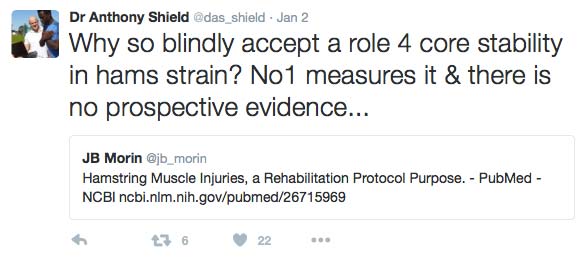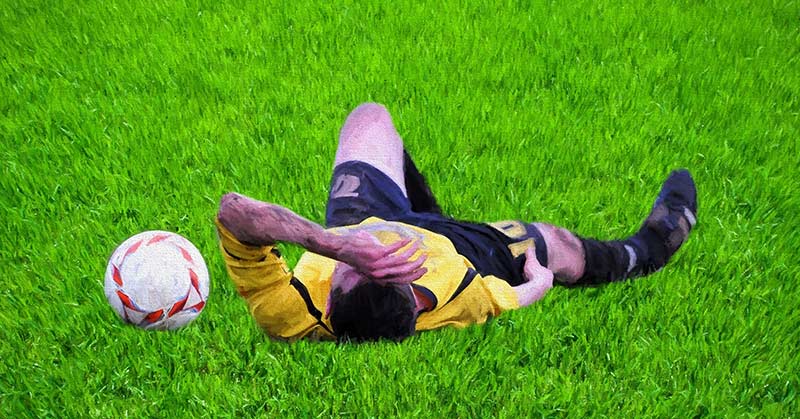
By Carl Valle
If you are a betting person like me, you will wager on the likelihood of hamstring injuries. Our goal is to change the odds, not eliminate them unless you don’t plan on sprinting at high speeds. This article will cover mechanical tears in the hamstring muscle group, not talk about “cramps.” Research is clear that cramping is not always related to preparation of the body for sport.
I will outline a way to reduce injuries and a smarter way to rehabilitate them if things go south. I have had the luxury of working with some of the best minds and talents in professional sport, so will discuss both clinical research and best practices. The text will show proven fresh ideas that are far more efficient and effective than old methods that should be put to rest.
Who Can Use These Guidelines?
Any professional in sport can use these guidelines, not just elite coaches. I have coached at all three levels (high school, college, and pro) and seen first-hand what doesn’t work and what does. For the sake of transparency, I will name experts and show why a process works for some and but perhaps not for everyone. So if you have a responsibility to a team or are an athlete coming back from a pull, this outline will be worth your time and something worth printing out. I urge you to seek aggressively what is best and refine this step-by-step process as the structure is sound and the details can always be fine-tuned.

Screen Medical and Training History
Most coaches inherit their athletes so that you could be handed a ticking time bomb. When a coach inherits damaged goods, their success rates plummet, even if they are great at what they do. Having excellent medical records is the first and most important step because you can’t go back in time and unknown information poisons good training systems. My suggestion is to use your own AMS system to control your destiny. Even if it’s paper, the key is the access and integrity of the data, not the cool UX or testimonials of hospitals.
You also need an athlete’s training history. Why coaches don’t care about legacy training data is an enigma to me. Patterns of training in the past usually provide clues as to why people get hurt in the future. So much can be learned from training records. Even great programs are humbled when bad programs ship their problems to them. Change to an improved situation takes time and is analogous to deprogramming people from cults.
The best way to screen people for past injury history and training background is a written report followed by a face-to-face review. Sometimes past records exist and can be forwarded, making the process simpler. Still, records—no matter how sophisticated the software and technology—need human input. Also, any lack of data is useful information to coaches as well, showing poor procedural issues and past internal problems with injury cultures.
The first step is using a simple form to cover the years of living from cradle (genetic testing will make things more interesting) to current status. I use “living” as many athletes get injured outside of sport, so questions must be exhaustive and not too narrow. Also, it is important to name names with medical professionals and milestones. Those include information about actual diagnoses and whether or not an athlete completed therapy. So many times I see records of symptoms but no data or diagnosis.
Also creating frustration, many athletes stop rehab because the season ended, not because they finished treatment. Medical imaging has value, but the research also points out that it’s part of the diagnosis and not the end guide. Many pain bloggers talk about radiology not representing function, but not too many avulsions work out in sport and with the number of pain drugs people are on, this process is messy.
A wise approach is seeing a combination of pain, functional outcomes, and radiology. Some athletes have phantom pain from chronic injury; some have major impairments from undiagnosed biomaterial destruction (fractures and massive tearing) that go undiagnosed. The body can heal itself but sometimes needs help. Don’t let symptoms and radiology rule, but don’t ignore them and just do “movement.” Some trauma can be life-changing. I have seen major nerve damage that ruined careers because therapists didn’t listen to athletes.
Following up with records is talking and asking for recollections. I get more out of this because athletes hate filling out reports. I don’t want people skipping steps and just reviewing together because bias slips and the contrast of what is reported and what is teased out is a great way to profile compliance with monitoring and reporting. Finally, talking about past training is a good way to learn what athletes like and how they view preparing for sport. Skipping this step is a mistake in the long run.

Figure 1. When injuries occur, training suffers and a vicious cycle of re-injury usually follows. What is important is being creative to work around injuries so poor conditioning and loss of eccentric power is preserved.

Test Muscle Length, Strength, and Readiness
The hamstring group is three muscles connected into one system, and each has individual responsibilities. My favorite question to ask athletes after they say they pulled a hamstring is “which one?” The answer is almost always the right or left leg, rather than which actual hamstring was injured. It is also important to know the degree of damage. I have seen crazy injuries and ones that were false alarms, and imaging helps identify past problems and current ones. Radiological findings don’t show successful outcomes in the literature and are a poor predictor of return to play.
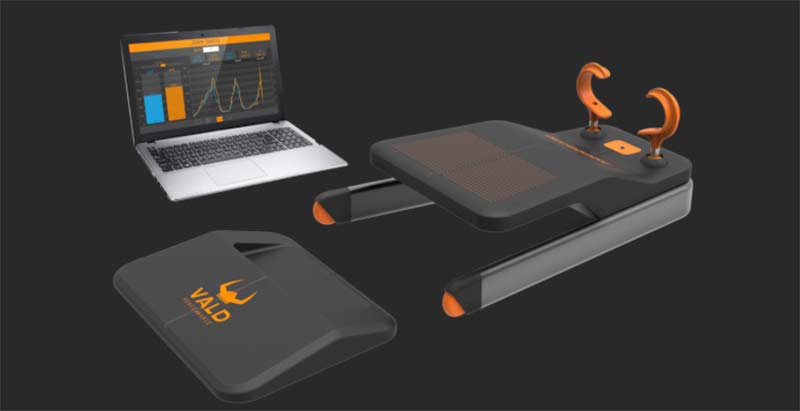
Figure 2. The NordBord reflects aggressive yet sane training in the weight room. I have seen an amazing correlation between the eccentric utilization ratio and hamstring strength and tissue length using the kBox and conventional methods.
I have seen repeated imaging of scar tissue remodeling rapidly from aggressive eccentric work and manual therapy. Manual therapy doesn’t break down scar tissue, but mobilization does allow changes so guarding is lost and confidence is increased. I never use the word placebo, because I have seen Tensiomyography and Elastography changes from manual therapy. But the scar only changes when massive eccentric loads tear and replace the tissue. Most of the time a tear is going to leave some small scarring, but the idea that it’s in there forever is just a belief because very few people train hard after an injury to remodel tissue. Time helps to heal, but the scars are still there.
Time helps to heal, but the scars are still there. Click To TweetHamstring testing can be done with different diagnostic tools, and the most promising is the NordBord. I am not a big fan of Nordics as an exercise but found the research on hamstring length (fascicle) and strength to be straight to the point. Ultrasound can measure length and risk can be measured based on the clinical research. Strength to the specific hamstring muscle groups can be measured as well, and the data can show who has been naughty in the offseason and who has been nice (training properly). Other training indices can feed into the hamstring strength score, and asymmetry can be extracted with athletes who are healthy or have had past issues.

Figure 3. Tensiomyography and other screening tools are starting to slowly gain momentum in elite sport. Much of the reason for such interest is the failure of current practices in showing better outcomes.
Myoanalytics, an important area, coined and expanded by performance and medical consultant Jose Fernandez, is a fantastic way to see current readiness of muscle. Tensiomyograpy, Elastography, and Myotonometry can help address acute changes from day to day or even session to session within the day. The most perplexing area of sports medicine is muscle monitoring since injury reports cite tissue or joint indicators. Yet everyone seems to be measuring more distal indices like autonomic fatigue versus site-specific changes. College and pro teams must focus on myoanalytics or miss another level of early detection.

Assess Locomotion Techniques
Simple video analysis can detect possible biomechanical errors that increase risk. Many manual therapists don’t see someone move, but those who do have an extreme confirmation bias that makes me want to pull what’s left of my hair. So many times I have seen athletes get off the table with a placebo therapy and say the most mind-blowing responses that feed into the therapist. If a tablet or iPhone is used for pathomechanics evidence, or live demos are used as examples, run the other way. The evidence is measurable and repeatable, and many adjustments and rubs don’t change anything. Sometimes therapy can be seen with EMG. The fine wire stuff is harder to find because sticking needles into small muscle groups isn’t popular with elite athletes, so buy your own equipment. I would rather see more fine wire EMG units than “dry needling” because of the need to get meaningful data.
The most common issue I see is the landing mechanics of high-speed efforts by soccer players. Bad footstrikes pollute the world’s most popular game. Look at major teams and scout the heel striking first during early acceleration. One would think that this is bogus, but it happens for many different reasons. Make sure basic acceleration and top-speed mechanics are exposed to veterans, reinforced by academies, and safeguarded in PE or youth programs.
During high-speed activities, athletes pull at higher forces and velocities. So movement screens are rarely valuable but do have some merit if scored properly. Footstrike and recovery mechanics expose athletes to either fast deceleration eccentric open forces (swing phase) or rapid acceleration of eccentric load during the closed mid-stance phase. During Repeat Sprint Ability tests and long sprint testing get video and break down running mechanics. Not much can be done for the most part, but some changes are possible even late in careers. Here are some useful key performance indicators during video review.
Pelvic position – Some attacks on posture are right since posture is not a ticket to injury. Those who say it doesn’t have any relationship live in a world in which wellness walks with the dog and grocery shopping are the challenges their patients face. Sport is not the same since the demands are unique. Working with occupational therapy is also different than sport. I don’t expect to have sports medicine walk in and transition without learning, so each population must be treated slightly differently.
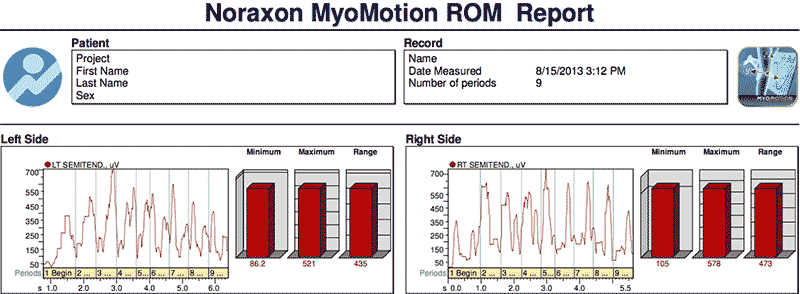
Figure 4. Lab quality surface EMG is a practical option when coaches use it during sport activities to evaluate firing patterns. Since interpretation requires a lot time, simple approaches like testing key performance movements can dramatically decrease time and confusion.
We are looking for no changes in inclination from technique errors or preparation. An athlete having lordosis from vertebral architecture will not change because of a PRI session. On the other hand, restoration of some guarding can get athletes out of compensatory patterns that are not mechanically advantageous. I have never seen a legion of world-class Olympic weightlifters with bad kyphosis, but having great posture isn’t going to prevent elbow injuries in the MLB.
A fair and middle-ground area is making sure training doesn’t ruin posture. Many bad training sessions can cause errors that change body alignment to unfavorable positions. The pelvis should tilt back and forth and form a figure-eight pattern during upright running and have less motion during early acceleration. Look for excessive movement or restriction, not locked positions. If athletes have high-knee position at high speed, their pelvises aren’t restricting them.
Arm and leg synchronization – Dan Pfaff has explained arm and leg relationships for years. Arm action usually either poisons lower body kinematics or identifies dysfunctional changes. Very few videos have the image quality to show precisely what is going on with kinematics. Also, force analysis in racing is not happening with current track and shoe technology, so practices and some limited race footage are all we have and. The arms and legs stay together with regards to timing for balancing things out. Instead of butchering things I suggest an Altis coaching education week in Phoenix.
Landing and propulsion mechanics – Footstrike is a growing area of data way beyond the scope of this article, but high-speed film and modern pressure mapping are evolving to decode the Rosetta Stone of anatomy, forces, and muscular recruitment. Not too far down the road, workshops that connect foot mechanics and motion with training and therapy will be more accessible.

Profile Speed and Conditioning
The cost of doing business with both effort and work with athletes is important to know—which means testing speed and stamina. Absolute speed testing looks at what an athlete can do, and conditioning tests look at what the athlete can repeat and sustain. Without knowing basic aerobic fitness and speed, many athletes with great resilience qualities from weight training and running technique simply get trashed. No matter how great the weight training, offseason preparation, manual therapy, and diet, any athlete can get ruined by team coaches and bad calendars that don’t gel with their fatigue and recovery. When one is trying to keep an athlete healthy, being in shape (aerobic) and knowing how hard (player load tracking) becomes a classic case of cultivating rest and knowing when to push.
Plenty of resources exist on modeling seasons, monitoring fatigue, and managing power. Anyone can, at least, use subjective data as simple online and mobile tools like Survey Monkey are free. A lot of work is being done on predictive modeling and risk analysis. Some formulas are better than others. I suggest looking at the Australian models for reducing non-contact soft tissue injuries and using an American approach that is more efficient and more engaging for sports that don’t have the wonderful culture of rugby.
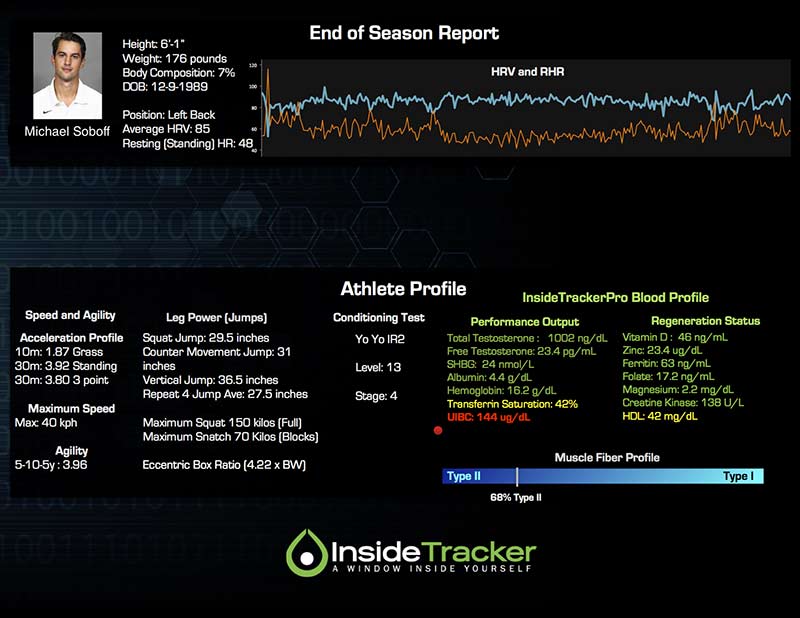
Figure 5. Test all of the speed, power, and conditioning qualities to see how athletes change. A lot of tables exist in the community on athletic development, but the key takeaway is to see how individuals change as a sign of risk or responsibility if they are improving.

Evaluate Hamstring Injury and Plan R2P
To deal with injuries, the first step is working with a sports medicine staff and having a plan ready. The most important part of this process is identifying the severity and location of the injury with imaging, and focusing on tolerance and symptoms with the human side. I have written my mantras on injuries, so I will not dig into the patient process about training and finishing the rehabilitation. Here are some common mistakes.
R2P based on calendar – I always see injuries happen in team sport in the US. When the injury is confirmed, a 6–8 week (or similar) time frame to return is shared. The problem is that healing times or rates and when someone can compete are not synonymous. Jack Youngblood, a Hall of Fame football player who taped up a fractured fibula to play, isn’t an example we can use for milestones in sports medicine. MRI findings are not successful for a successful return, so tissue readiness may be better suited to myoanalytics and functional norms.
R2P based on pain – Because pain science is a touchy subject, I will not get too deep with symptoms and readiness to play. What is one politically supposed to do with athletes and symptoms? My experience is that mental and physical feedback from the ability to do something meaningful, and the qualities that got them great returning to baseline, is a solid approach. With pain medications and most modalities focusing on removing pain, I don’t work with anyone unless they can warm up without referred problems. I need a mental status that is not weighed down with baggage.
R2P without milestones and benchmarks – I have shared definitions of what is included in a good R2P program, but the best ones are very explicit in criteria. The milestones are not steps on a staircase; they are small wins or achievements that show enough delineation to say one has hit a major indicator of change. The best resources are likely from advanced ACL programs by experts like Bill Knowles.
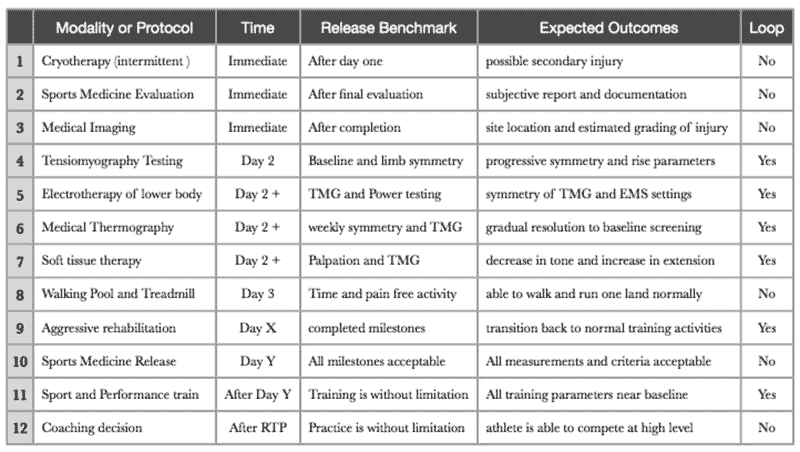
Figure 6. The above algorithm includes a possible roadmap for successful R2P if each step is broken down to very specific protocols. I highly recommend each injury have a decision making tree to help guide professionals and audit the process more.
Another example of a hamstring R2P algorithm is here and got criticized by noted hamstring injury expert Dr. Shield. Algorithms should be public as no secret recipe exists so they can be refined and improved.
Note this is for grade 2-3 and not for something slight as cryotherapy can retard healing. The current literature points out that cryotherapy isn’t as effective as it once was. In only a few cases does it make sense to ice, and even in those instances, arguments can be made against using it. Very little research can investigate actual muscle tears since histology is invasive and inducing tears is not an accepted design study ethically! I don’t currently ice after day two myself, but the theory is that the edema will be more problematic over the next week than the delay of repair. Will we see a future of no cryotherapy in the next ten years? I don’t know.

Follow the R2P Algorithm and Repeat the Process
The process of preparing is never-ending. Each year screening and testing will be done, and after injury, the sequence repeats. Each year review the protocols and procedures and fine-tune the process by becoming more efficient. Hopefully keeping up with the research will keep it more effective. Little things that make a difference are areas that are not sexy, such as making sure a laptop for the myoanalytics device is updated or notes on athlete feedback are recorded to the AMS platform.
My most important suggestion is following the R2P algorithm, so pressures to play don’t overwhelm the support staff. I love contracts and constitutions, meaning focusing on writing the heart of the program into a document instead of making it a personal decision. Everyone has negotiation skills to skip steps and freelance with practice. Recently a sports medicine professional added a practice component not agreed on earlier, making it a reactive scramble versus a well-oiled machine. If you want to make a change, at least, run it by everyone first before going rogue.
Rehabilitation is a dark art. While the sports medicine process is modern and much more evidence-based, we are still not much different than a century ago. Much of sports medicine is about loading and adaptation, and coaches and sports medicine professionals need to orchestrate the elements, not act like oil and water.
Closing Thought on Hamstring Injuries
It’s humbling to the ego and never fun dealing with hamstring injuries. While we can reduce them by using sound principles, the need for entertainment schedules and money aren’t increasing the results with the athletic population. The outline I have shared is not perfect, but it’s a great framework that is flexible and sound enough be modified by anyone seeking better outcomes.
Please share so others may benefit.
[mashshare]
